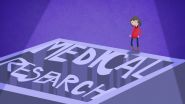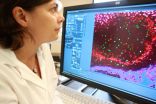"The lore of bullies has long permeated literature and popular culture. Yet bullying as a distinct form of interpersonal aggression was not systematically studied until the 1970s. Attention to the topic has since grown exponentially," said Shelley Hymel, PhD, professor of human development, learning and culture at the University of British Columbia, a scholarly lead on the special issue along with Susan M. Swearer, PhD, professor of school psychology at the University of Nebraska-Lincoln. "Inspired by the 2011 U.S. White House Conference on Bullying Prevention, this collection of articles documents current understanding of school bullying."
The special issue consists of an introductory overview by Hymel and Swearer, co-directors of the Bullying Research Network, and five articles on various research areas of bullying including the long-term effects of bullying into adulthood, reasons children bully others, the effects of anti-bullying laws and ways of translating research into anti-bullying practice.
Articles in the issue:
Long-Term Adult Outcomes of Peer Victimization in Childhood and Adolescence: Pathways to Adjustment and Maladjustment by Patricia McDougall, PhD, University of Saskatchewan, and Tracy Vaillancourt, PhD, University of Ottawa
The experience of being bullied is painful and difficult. Its negative impact--on academic functioning, physical and mental health, social relationships and self-perceptions--can endure across the school years. But not every victimized child develops into a maladjusted adult. In this article, the authors provide an overview of the negative outcomes experienced by victims through childhood and adolescence and sometimes into adulthood. They then analyze findings from prospective studies to identify factors that lead to different outcomes in different people, including in their biology, timing, support systems and self-perception.
Contact: Patricia McDougall at patti.mcdougall@usask.ca or (306) 966-6203.
A Relational Framework for Understanding Bullying: Developmental Antecedents and Outcomes by Philip Rodkin, PhD, and Dorothy Espelage, PhD, University of Illinois, Urbana-Champaign, and Laura Hanish, PhD, Arizona State University.
How do you distinguish bullying from aggression in general? In this review, the authors describe bullying from a relationship perspective. In order for bullying to be distinguished from other forms of aggression, a relationship must exist between the bully and the victim, there must be an imbalance of power between the two and it must take place over a period of time. "Bullying is perpetrated within a relationship, albeit a coercive, unequal, asymmetric relationship characterized by aggression," wrote the authors. Within that perspective, the image of bullies as socially incompetent youth who rely on physical coercion to resolve conflicts is nothing more than a stereotype. While this type of "bully-victim" does exist and is primarily male, the authors describe another type of bully who is more socially integrated and has surprisingly high levels of popularity among his or her peers. As for the gender of victims, bullying is just as likely to occur between boys and girls as it is to occur in same-gender groups.
Contact: Dorothy Espelage at espelage@illinois.edu or (217) 333-9139.
Translating Research to Practice in Bullying Prevention by Catherine Bradshaw, PhD, University of Virginia.
This paper reviews the research and related science to develop a set of recommendations for effective bullying prevention programs. From mixed findings on existing programs, the author identifies core elements of promising prevention approaches (e.g., close playground supervision, family involvement, and consistent classroom management strategies) and recommends a three-tiered public health approach that can attend to students at all risk levels. However, the author notes, prevention efforts must be sustained and integrated to effect change.
Contact: Catherine Bradshaw at cpb8g@virginia.edu or (434) 924-8121.
Law and Policy on the Concept of Bullying at School by Dewey Cornell, PhD, University of Virginia, and Susan Limber, PhD, Clemson University.
Since the shooting at Columbine High School in 1999, all states but one have passed anti-bullying laws, and multiple court decisions have made schools more accountable for peer victimization. Unfortunately, current legal and policy approaches, which are strongly rooted in laws regarding harassment and discrimination, do not provide adequate protection for all bullied students. In this article, the authors provide a review of the legal framework underpinning many anti-bullying laws and make recommendations on best practices for legislation and school policies to effectively address the problem of bullying.
Contact: Dewey Cornell at dcornell@virginia.edu or (434) 924-0793.
Understanding the Psychology of Bullying: Moving Toward a Social-Ecological Diathesis-Stress Model by Susan Swearer, PhD, University of Nebraska-Lincoln, and Shelley Hymel, PhD, University of British Columbia.
Children's involvement in bullying varies across roles and over time. A student may be victimized by classmates but bully a sibling at home. Bullying is a complex form of interpersonal aggression that can be both a one-on-one process and a group phenomenon. It negatively affects not only the victim, but the bully and witnesses as well. In this paper, the authors suggest an integrated model for examining bullying and victimization that recognizes the complex and dynamic nature of bullying across multiple settings over time.
Contact: Susan Swearer at sswearer@unl.edu or (402) 472-1741 or Shelley Hymel at shelley.hymel@ubc.ca or (604) 822-6022.
INFORMATION:
Copies of articles are also available from APA Public Affairs, (202) 336-5700.
The American Psychological Association, in Washington, D.C., is the largest scientific and professional organization representing psychology in the United States. APA's membership includes more than 122,500 researchers, educators, clinicians, consultants and students. Through its divisions in 54 subfields of psychology and affiliations with 60 state, territorial and Canadian provincial associations, APA works to advance the creation, communication and application of psychological knowledge to benefit society and improve people's lives.
http://www.apa.org

